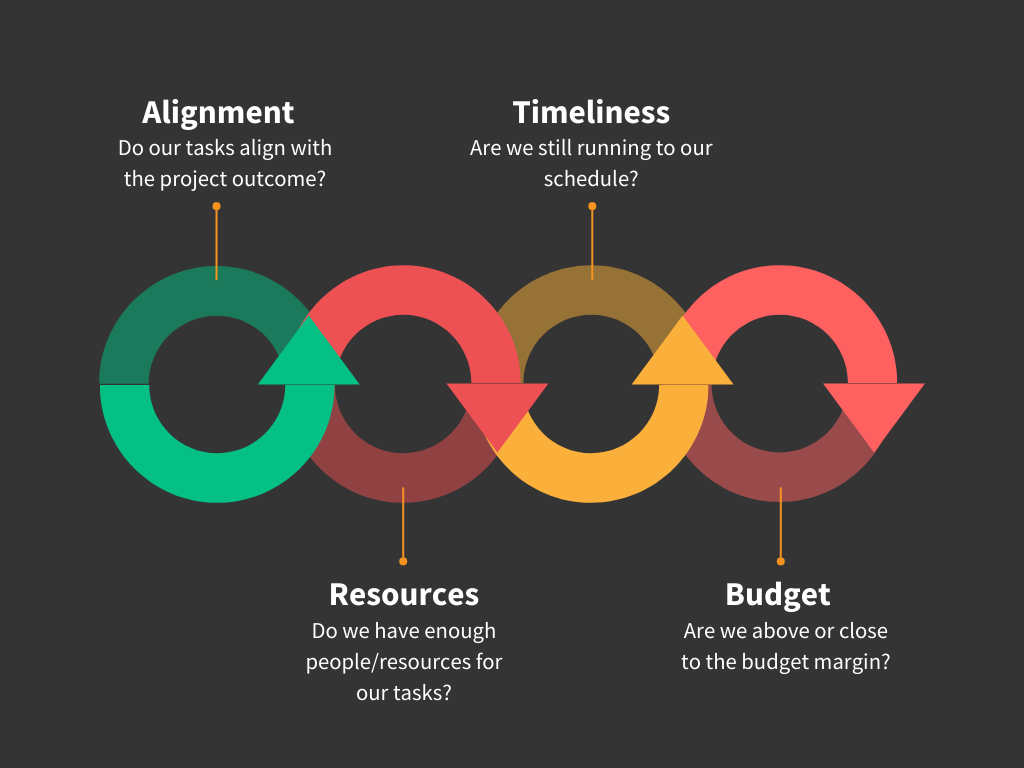How to make your teams safe to fail

The future of work isn’t going to accept businesses that are rigid and impractical.
Here are 3 tricks to create a fail safe environment for your teams.

How can a company present themselves as ground-breaking if they are scared of failure?
Failure, as we commonly know it, is the looming shadow that turns many leaders and teams away from change or new ideas. Such as a tightrope walker, we fear the repercussions of losing our footing.
A tightrope walker may suffer severe injury or perhaps even death if they fail. For us, we perceive our failures to have the same level of risk, it’s just in a different context. If we go through a negative event or process, we may begin to fear for our stability.
The spiral of fear
The spiral of fear shows us how negative thoughts can delve into deeper, more primal concerns. Our brain, often subconsciously, keeps us from attempting anything risky, which inevitably would lead to a certain amount of loss.

We see how even the slightest negative thought can spiral out of control, kicking in our fight or flight reaction to stop us from attempting something that may jeopardise our mental and physical safety. Most of us won’t die from failing at work. Most of us might not even lose our position. But our brain can paint these negative pictures to keep us aligned to the status quo. In the realm of psychology, this is known as cognitive distortion.
Why risk it for the biscuit? Why try anything new if the current environment seems alright?
Alright just doesn’t cut it anymore. The future of work isn’t going to accept businesses that are rigid and impractical. We need to nurture change, and how can we change if we do not try new things? Trying may lead to failure, but there are productive ways to deal with failure and make it safe for teams and the overall business.
3 tricks to create a safe to fail environment for your teams:
Set up a safety net
The first thing in fail safety is removing a certain amount of fear. We need to feel confident when we step into a new decision, otherwise the risk of failure increases.
Initially, teams should present their project concept to explain the “what, why, and how” of their ideas. This shouldn’t just be to the higher-ups in charge of funding, but any other employees that may be affected by the project’s outcome.
There should also be a process available to employees that can be revised and implemented at any stage of their project. This process should help teams discover any red flags within their project and supply some form of clarification and the next steps to take. Below is a basic yet helpful thought process diagram that can be beneficial for aligning team projects.

No one likes unnecessary processes, so make sure your teams see the value. Be open and transparent by telling them why this exists and how it will help not only the company, but their ability to trial new things.
Develop an open and transparent communication channel with employees
Keep both eyes and ears open when it comes to new projects. If we want to get the jump on failure, then opening up to continuous communication is the best strategy. Awareness helps us understand the current wins and struggles happening within the project and its team.
Not only will this help us see major issues in advance, but it will build our relationships and culture with other team members and employees. If done correctly, transparent communication can grow our trust and respect for others and vice versa. Two birds, one stone!
Transparency is the key which will unlock company productivity and project creation, but only if it is done correctly! Read more about effective communication here.
Engage the team in the project review
Allow the project team to present their findings in a presentation format. This presentation should include:
- Project overview
- Key findings
- Negative experiences
- Positive experiences
- Lessons learnt
- Overall outcome
Sharing negative experiences and findings can be anxiety inducing and stressful, so make sure everyone is aware that negativity and failure isn’t a bad thing, it’s a learning opportunity! Understanding the failures will help identify what went well and what was pure luck.
Failure is paramount for future success
Failure is paramount for future success. It should also not be seen as an individual’s fault.
Be a team and stand by your co-workers, especially in failure.
These 3 tricks will lead your teams down a path of flexibility, productivity, and faster decision-making.

.png)
%20(1).png)

%20(1).png)



